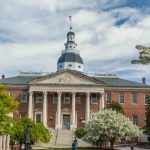For most K-12 students across America, December marks the end of the Fall semester. While young people wait with bated breath for the start of the holiday break, the U.S. Senate is considering expanding access to community schools nationwide.
The Full-Service Community School Expansion Act of 2023, legislation championed by U.S. Senator Sherrod Brown of Ohio, expands upon Ohio’s success with the community schools model.
If passed, this bill would allocate $3.6 billion over five years to expand access to community schools serving low-income families. Beyond that, it would provide federal grants to existing community schools and build a community school infrastructure by establishing state-level teams and channeling more resources to meet the healthcare and early childhood needs faced by school districts nationwide.
As more community schools open in Cincinnati, Ohio; Chicago; Los Angeles; Austin; New York; and Baltimore, Senator Brown’s push for community schools has found supporters in U.S. Senators Chris Van Hollen (D-MD), Kirsten Gillibrand (D-NY) and Ben Ray Luján (D-NM).
Other sponsors include U.S. Senators Bernie Sanders (I-VT), Mazie Hirono (D-HI), John Fetterman (D-PA), Alex Padilla (D-CA), Bob Casey (D-PA), Martin Heinrich (D-MN), Tim Kaine (D-VA), Amy Klobuchar (D-MN), Ben Cardin (D-MD), Dick Durbin (D-IL), and Tammy Duckworth (D-IL).
“Ohio has proven how successful full-service community schools can be at improving academic achievement and student attendance,” Brown said.
Since the 19th century, during the establishment of the first urban settlement houses for newly arriving immigrants, community schools dynamically organized around the utilization of community resources to ensure equitable student success.
At its inception, these neighborhood-based public schools provided learning, development opportunities, social services and healthcare. Today, they are still centered around the needs of students, their families and the community.
“Community schools provide for our students’ needs both inside and outside of the classroom—helping break barriers to success that underserved young people often face,” Van Hollen said.
The introduction of this legislation comes at a time when public education is the latest frontier in America’s evolving culture war. The bill helps school systems struggling to retain children and families by expanding medical, mental and nutritional health services.
Amid book bans, prohibition of African-American history, and the elimination of culturally relevant curriculum in K-12 public education, the Full-Service Community School Expansion Act of 2023 also invests in mentoring and youth development programs and technical assistance for community schools.
At the cornerstone of community schools lies six pillars of practice, including robust and proven curriculum, high-quality teaching, inclusive leadership, positive behavior practices, family and community partnerships, and strong neighborhood and community support services. American Federation of Teachers President Randi Weingarten said these practices should be the norm and not the exception.
Community schools are one of the best ways to meet the academic, social and emotional needs of our students and their families,” Weingarten said.
“They make our public schools hubs in their neighborhoods, combining academics with extended and hands-on learning opportunities; family and community partnerships; and an infusion of medical, mental health, and other social services to help meet the challenges students and families confront today, including learning loss, loneliness, and literacy,” she added.
A recent multiyear impact study of New York City’s more than 200 community schools found a significant decrease in chronic absenteeism and increased student achievement and graduation rates for all students, especially Black, Brown, and unhoused students.
Jessie Hudson, a recently retired special education community school educator, said the community school model allowed her to discover her students’ needs inside and outside the classroom and collaboratively address them with community members on Chicago’s West Side.
And while the negative trend of absenteeism–laid bare by the pandemic–has affected classrooms citywide, Hudson, formerly of Beidler Elementary School, one of Chicago’s sustainable community schools, described the community school approach as one of the best means of engaging students.
“The Sustainable Community Schools initiative has provided learning opportunities for students to develop skills to match their dreams,” Hudson said. .”It has given hope by mending the minds of community support groups, parents, students, and community members for the purpose of students not just to live for the present but to be equipped with the tools necessary to thrive.”
Journey For Justice national director Jitu Brown agreed.
Brown said he and his national coalition of parents, students, and community members see the community school model as a tool in the push for greater freedom, justice, and equity for Black and Brown communities.
“What is needed in Black communities is our right to self-determination,” Brown said at the Network for Public Education conference in Washington, D.C. in October. “We need the right to define, speak for and create education models for ourselves. For us, community schools are our chance for self-determination.”
The community school model, built through strong collaborations between local school systems and their education unions, has served as a holistic model to support children and their well-being.
Seeped deeply into community engagement and the school’s position as the “hub” of communities, the model and its success have become a centerpiece of the labor and progressive movement’s fight against expanded voucher programs and other right-leaning privatization attempts.
Chicago Mayor Brandon Johnson, a former middle school educator, sees the community school model as an answer to decades of public education cuts and school closings on the South and West sides of the city.
In July, his transition committee proposed increasing the number of community schools in the city from 20 to 200.
Indigenous tribes and communities have also championed the model. U.S. Senator Luján told Forbes that community school expansion reaffirms the common saying that it takes a village to raise a child.
“When I was growing up in Nambe, it took a village, and today should be no different,” Luján said. “The community school model helps bring community resources into school buildings to improve children’s well-being, especially in low-income and rural schools.”
Last year, New Mexico received its first-ever awards from the Department of Education’s Full-Service Community School grant program, a part of the Department’s Fund for the Improvement of Education. Luján called the move groundbreaking, given the work already being done in Albuquerque, Las Cruces and Taos, New Mexico.
Throughout the country, this school model is credited with uplifting neighborhoods by establishing community partnerships and providing schools with nurses, social workers, guidance counselors, community school coordinators, and other support personnel.
With the help of community health centers, community schools also provide a robust offering of after-school programs for students and families on campus. Community members in local food deserts can also access healthy foods at farmers markets and community gardens.
For National Education Association President Becky Pringle, the pending legislation represents a shared vision that every student must be prepared to succeed in career, college or citizenship.
“Community schools play a critical role in delivering targeted and specific educational opportunities for students while also offering hope, opportunity, and transformation to entire communities,” Pringle said.
“All students, no matter their race or ethnicity or gender, in urban, suburban, and rural communities deserve a safe and welcoming school where they can thrive,” she exclaimed. “And this federal legislation helps put students on that path.”
The Full-Service Community School Expansion Act of 2023, introduced just a few days after the Thanksgiving congressional break, faces an uphill battle, especially in the Republican-controlled House of Representatives.
Congresswoman Susie Lee (D-NV-3), a former education non-profit leader, introduced accompanying legislation in the House. She told Forbes that the bill allows for the investment “in the health, stability and academic achievement of students by expanding wraparound services for the kids and families who need them most.”
“When students have access to nutritional health services, tutoring, after-school programs, and mental health support, they perform better in school,” Lee said. But the sad reality is that far too many students don’t have access to these kinds of support systems.”
Read the full article here





